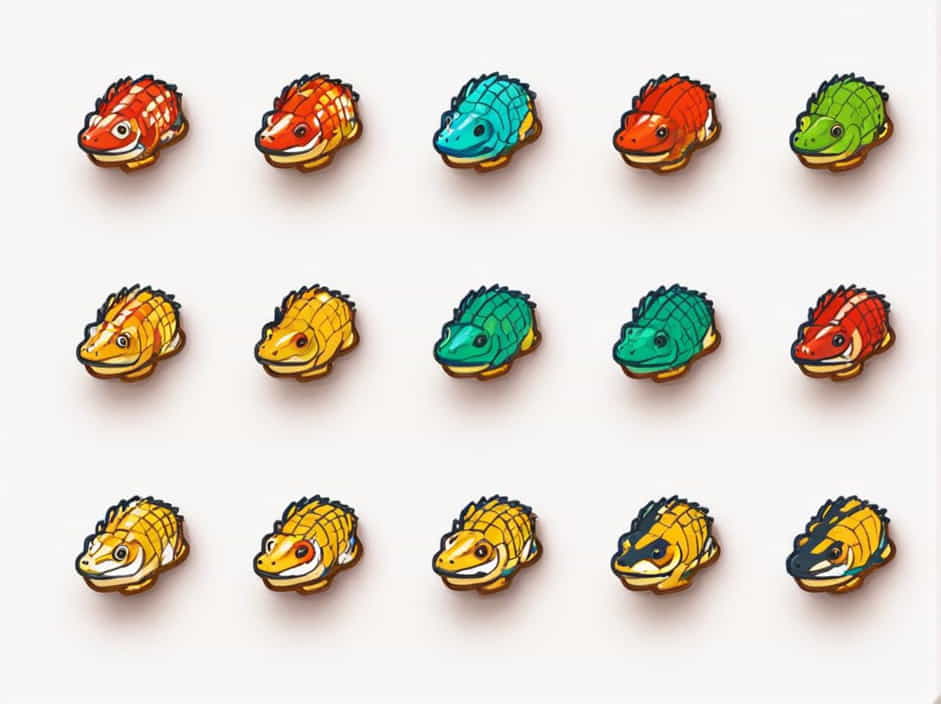The Mesozoic Era is often called the Age of Reptiles because it was dominated by incredible prehistoric reptiles, including dinosaurs, pterosaurs, and marine reptiles. This era lasted from about 252 to 66 million years ago and was divided into three periods: Triassic, Jurassic, and Cretaceous.
During this time, reptiles evolved to dominate land, air, and water. Some of these creatures are well-known, while others are more obscure but just as fascinating. Let’s explore some of the most remarkable reptiles of the Mesozoic Era.
The Dominant Reptiles of the Mesozoic Era
1. Dinosaurs: The Rulers of the Land
Dinosaurs were the most famous reptiles of the Mesozoic Era. They evolved into a wide variety of species, from small, bird-like creatures to gigantic predators and plant-eating giants.
Notable Dinosaurs from Each Period
-
Triassic Dinosaurs:
-
Coelophysis – One of the earliest dinosaurs, a small, fast predator.
-
Plateosaurus – A large herbivore that walked on two legs.
-
-
Jurassic Dinosaurs:
-
Allosaurus – A fearsome predator, similar to a smaller Tyrannosaurus rex.
-
Brachiosaurus – A long-necked herbivore that could reach high trees.
-
-
Cretaceous Dinosaurs:
-
Tyrannosaurus rex – The most famous carnivore, known for its massive skull and powerful bite.
-
Triceratops – A large, horned herbivore that likely used its frill for defense.
-
Dinosaurs thrived throughout the Mesozoic Era, with thousands of species adapting to different environments.
2. Pterosaurs: The First Flying Reptiles
While dinosaurs ruled the land, pterosaurs took to the skies. These flying reptiles evolved into various shapes and sizes, from small gliders to massive aerial predators.
Famous Pterosaurs:
-
Pteranodon – A large, crest-headed pterosaur with a wingspan of up to 20 feet.
-
Quetzalcoatlus – One of the largest flying creatures ever, with a wingspan over 30 feet.
-
Rhamphorhynchus – A smaller pterosaur with a long tail and sharp teeth.
Unlike birds, pterosaurs had membranous wings and were likely covered in a fur-like coating called pycnofibers.
3. Marine Reptiles: The Predators of the Ocean
The Mesozoic oceans were filled with massive marine reptiles, many of which were apex predators. These creatures were not dinosaurs but were just as dominant in their environments.
Types of Marine Reptiles
-
Ichthyosaurs – Dolphin-like reptiles that swam at high speeds.
-
Shonisaurus – One of the largest ichthyosaurs, growing over 50 feet long.
-
Ophthalmosaurus – Had huge eyes, allowing it to hunt in deep waters.
-
-
Plesiosaurs – Long-necked marine reptiles that likely hunted fish.
-
Elasmosaurus – Known for its incredibly long neck and small head.
-
Kronosaurus – A massive, short-necked plesiosaur with a powerful bite.
-
-
Mosasaurs – Giant, lizard-like predators that dominated the late Cretaceous seas.
-
Tylosaurus – One of the largest mosasaurs, growing over 40 feet long.
-
Mosasaurus – The apex predator of its time, similar to a modern killer whale.
-
Marine reptiles were not dinosaurs but were closely related to modern reptiles like snakes and lizards.
4. Crocodile-Like Reptiles
Modern crocodiles have ancestors that lived during the Mesozoic Era. Some of these prehistoric crocodiles were much larger than today’s species and lived both in water and on land.
Famous Mesozoic Crocodiles:
-
Deinosuchus – A massive crocodilian that grew up to 33 feet long and could prey on dinosaurs.
-
Sarcosuchus – Also known as the SuperCroc, reaching lengths of 40 feet.
-
Pristichampsus – A land-dwelling crocodile that had long legs for fast running.
Unlike modern crocodiles, some of these ancient species were more adapted for land hunting rather than purely aquatic life.
5. Early Turtles and Other Reptiles
The first true turtles appeared during the Triassic Period and evolved into larger species during the Jurassic and Cretaceous.
Notable Prehistoric Turtles:
-
Archelon – One of the largest turtles ever, reaching over 15 feet in length.
-
Proganochelys – One of the earliest turtles, already possessing a hard shell for protection.
Other non-dinosaur reptiles of the Mesozoic included tuatara-like reptiles, such as Pleurosaurus, a lizard-like creature that lived in aquatic environments.
Why Did Mesozoic Reptiles Go Extinct?
The Mesozoic Era ended 66 million years ago with a mass extinction event, likely caused by:
-
A massive asteroid impact in what is now Mexico.
-
Volcanic activity that altered the Earth’s climate.
-
Drastic environmental changes that affected food sources.
While most Mesozoic reptiles went extinct, some lineages survived and evolved into modern species. Birds evolved from theropod dinosaurs, and crocodiles remained relatively unchanged.
The Mesozoic Era was the golden age of reptiles, with dinosaurs ruling the land, pterosaurs soaring in the skies, and massive marine reptiles dominating the oceans. These incredible creatures evolved over millions of years, leading to some of the largest and most powerful reptiles in Earth’s history.
Though the Age of Reptiles ended with a mass extinction, their legacy lives on in modern reptiles, birds, and fossils that continue to fascinate scientists and enthusiasts alike.
